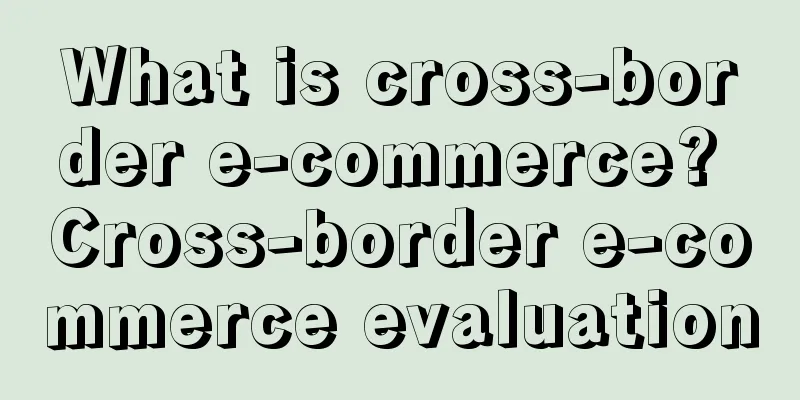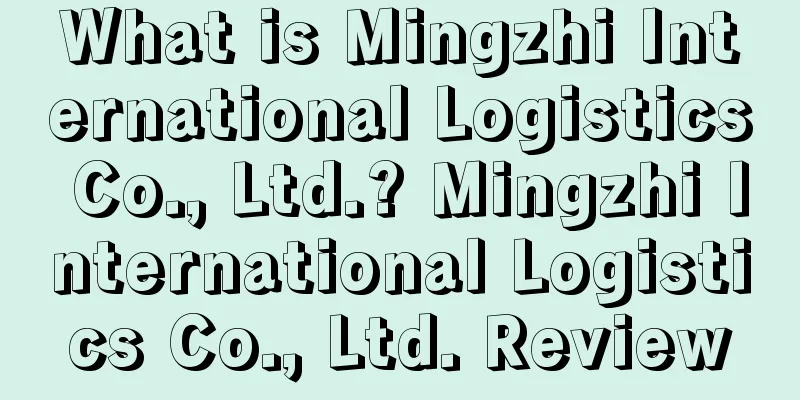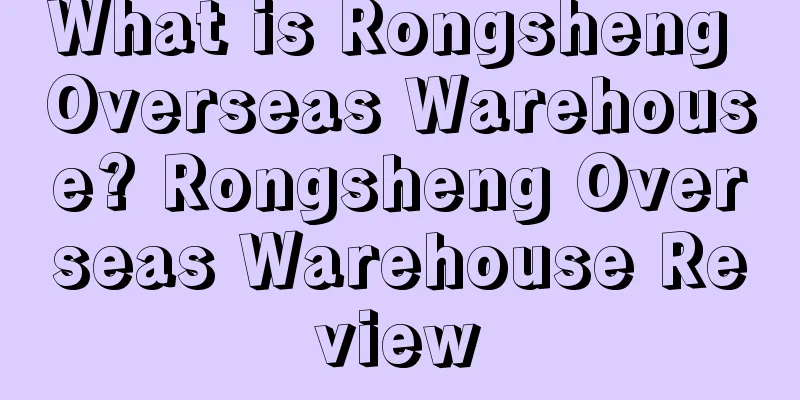What is cross-border e-commerce? Cross-border e-commerce evaluation

Cross-border e-commerce generally refers to cross-border e - commerce, which refers to an international business activity in which trading entities in different customs territories reach transactions, make payments and settlements through e-commerce platforms, and deliver goods and complete transactions through cross-border logistics .sourceWhen Amazon entered the Shanghai Free Trade Zone on August 20, 2014, it signed a memorandum on cross-border e-commerce cooperation, which stated that “Amazon will open its new cross-border e-commerce platform in the free trade zone.” From this we know that cross-border e-commerce should be a direct translation from the English name: “Cross-border e-commerce.” Common models of cross-border export e-commerce1. B2C representative platforms such as Amazon, LightInTheBox, etc. 2. C2C represents platforms such as AliExpress, eBay, wish, etc. 3. B2B representative platforms such as Alibaba China Suppliers, Global Sources, Made-in-China.com, DHgate.com, Dalong.com, etc. Common models of cross-border import e-commerce1. B2C representative platforms such as 1haodian.com, Amazon Overseas Shopping, SF Overseas Shopping, Tmall Global, Suning Overseas Shopping, JD Global Shopping, etc. 2. C2C representative platforms such as Taobao Global Shopping, Ymatou, etc. 3. M2C representative platforms such as Tmall Global, etc. 4. B2B model: representative platforms such as cross-border convergence points 5. B2B2C model is the bonded mail model. The biggest feature of this model is that there is no pressure on inventory, but in fact this model is a general trade implemented in the name of cross-border e-commerce. In the long run, it will not be the development direction of cross-border e-commerce. 6. The representative company of overseas e-commerce direct mail is Amazon. The model is characterized by a global high-quality supply chain logistics system and rich SKUs. 7. Representative companies of the rebate shopping guide/agent operation model include Momoso, Hai360, and Haimaoji. In fact, there are two types of this model: one is technical, and the other is agency operation. Generally, cross-border e-commerce has advantages in the early stage, such as easy to start, low cost, and rich SKUs, but lacks competitiveness, and similar real-time price updates require strong technical support, so domestic companies that started with this model have all transformed. 8. Content sharing/community information, representative companies include Xiaohongshu. This model is the promotion base for overseas brands, because it mainly guides consumption through content and achieves natural conversion. Well-known cross-border e-commerce platformAmazon was founded in 1995, with 15 sites in 65 countries, and customers from North America, Asia Pacific, and Europe. Wish was founded in 2011, with customers mainly from North America and Europe. AliExpress was established in April 2010. Its customers mainly come from Russia and Brazil. eBay was founded on September 4, 1995, with customers mainly coming from the United States, the United Kingdom, and Australia. What are the characteristics of cross-border e-commerce?Feature 1: Global The Internet is a borderless medium with global and decentralized characteristics. Due to the development trend of economic globalization, merchants rely on the Internet to conduct cross-border sales, which makes cross-border sales also have global and decentralized characteristics. Feature 2: Anonymity The global and decentralized nature of cross-border e-commerce makes it difficult to identify the identity and specific geographic location of buyers. Most buyers in online transactions will not reveal their specific location and identity, but this does not affect the transaction, and the anonymity of the Internet also allows buyers to do so. Feature 3: Intangibility The development of the Internet has made the transmission of digital products and services popular. Digital transmission is the centralized transmission of data, images and sounds in a global network environment through different types of media. These media mainly exist in the form of data codes in the network and are therefore intangible. Feature 4: Immediacy When it comes to transmitting information on the Internet, the speed of transmission has nothing to do with the geographical location or distance of the information. In traditional transaction modes, mainly letters, faxes, telegrams, etc., there is a long period of uncertainty between sending and receiving information. In e-commerce, information exchange is more convenient, and sending and receiving information are almost synchronized, just like face-to-face communication. Feature 5: Paperless E-commerce mainly operates in a paperless manner, which is the main feature of trade in the form of e-commerce. In the process of electronic transactions, electronic computers will record a series of paper transaction data. Because electronic information exists and is sent in the form of bits, the entire information sending and receiving process can achieve paperless transactions. Feature 6: Rapid Evolution Cross-border e-commerce is a new model, and it is still in its development stage. The development of its network facilities and corresponding protocol software is highly uncertain. However, policymakers need to consider that e-commerce is a transaction on the Internet, and like a newborn, it is bound to continue to evolve at an unprecedented speed and in unpredictable ways. Development Trend1. The industry is growing rapidly Looking back over the past few years, the average annual compound growth rate of the entire cross-border e-commerce industry has been above 30%. In fact, few industries can maintain such a high compound growth rate, because the premise is that the overall environment will not change within a few years. Therefore, we can boldly predict that the entire cross-border e-commerce industry will continue to maintain a high growth trend in the next 3-5 years. 2. Big sellers will become a trend Any popular industry will go through a reshuffle. In the future, the overall resources of the cross-border e-commerce industry will be further concentrated on large platforms and large sellers. This trend is inevitable, but it does not mean that small and medium-sized sellers have no chance at all. Often at this time they will enter the vertical and segmented markets. 3. Specialization of competition among sellers With the rapid development of the cross-border e-commerce industry, it can be said that the supporting facilities cannot keep up with the pace of development, but it does not mean that it will always be like this. The stabilization of the entire market must have higher requirements for cross-border e-commerce players. In the future, competition in this area will be a more professional competition of comprehensive strength. 4. The industry tends to be standardized For an industry to develop healthily, it must have standardized policies. For the cross-border e-commerce industry, whether it is import or export, there are now more and more policies. The entire industry will be more standardized in the future, and there will be more rational demands for practitioners. The significance of cross-border e-commerceCross-border e-commerce carries the foundation for promoting economic integration and trade globalization, and has a very important strategic significance. Cross-border e-commerce not only breaks down the barriers of national trade sales, but also makes cross-border sales borderless. Cross-border e-commerce has established a three-dimensional, multi-dimensional, open multilateral trade cooperation model, and promoted the optimal allocation of multilateral resources. For consumers, cross-border e-commerce platforms allow them to easily obtain information about other countries and buy high-quality and low-priced goods. References
|
<<: What is Cross-border E-commerce ERP? Cross-border E-commerce ERP Evaluation
>>: What is Black Friday? Black Friday Review
Recommend
How to improve exposure and search ranking through Amazon SEO?
Marketing has become a must for Amazon sellers. A...
This year's back-to-school season, the second-hand e-commerce in the United States has also been rolling up
As inflation continues, American consumers are tig...
What is FOBGOODS? FOBGOODS Review
FOBOODS is an emerging and fast-growing global B2B...
Biden meets with CEOs of Walmart, UPS, FedEx and others to discuss supply chain bottlenecks!
It is learned that according to foreign media repo...
93 ships are waiting to unload! Congestion at Los Angeles Port intensifies!
It is learned that according to foreign media repo...
Practical Tips | Inventory management is a mess? Do you really understand Amazon inventory reports?
Amazon Inventory Reports allow buyers and sellers ...
What is PAYSSION? PAYSSION Review
PAYSSION was founded on January 15, 2013, and is c...
Hurricane Idalia hits the United States! Amazon urgently closes some warehouses!
It is learned that according to foreign media repo...
Sellers, please note! This country has declared "national bankruptcy", and customers in this country: No need to pay back the money
On January 10, local time, Brazilian President Jai...
Market value: $345,000! CBP seizes another batch of Chinese goods!
<span data-shimo-docs="[[20,"获悉,据外媒报道,近日在路...
U.S. Black Friday online sales up 14.6%, led by strong apparel sales
Recently, according to foreign media reports, as o...
What is SpeedPAK? SpeedPAK Review
SpeedPAK is jointly created by eBay and its strate...
Which Facebook groups are your "charging stations"?
Quickly promote the 16th article outside the site ...
Officially implemented! Amazon's major favorable service has been launched
Amazon sellers’ mid-year feast, Primeday, is only...
What is One Retail Group? One Retail Group Review
One Retail Group is a multinational retailer and b...









